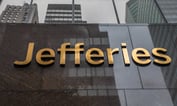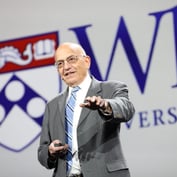 Professor Jeremy Siegel speaks at LINC 2018. (Photo: Lila Photo for TD Ameritrade Institutional)
Professor Jeremy Siegel speaks at LINC 2018. (Photo: Lila Photo for TD Ameritrade Institutional)
There are four steps that will lead to an economic and market recovery — and “we’re only going to have a market recovery if we have an economic recovery,” according to Jeremy Siegel, professor of finance at Wharton and WisdomTree senior investment strategy advisor.
“The first of these steps is fiscal and monetary support” — and “we can check that box” already because that arrived in “full force in the last two weeks as well as I could hope on both sides,” he said Monday during a weekly conference call on the state of the markets.
After all, the “very strong response” to the coronavirus and economic crisis that he called for “has been made” with the enactment Friday of the Coronavirus Aid, Relief and Economic Security (CARES) Act, he said. That followed Federal Reserve Chairman Jerome Powell slashing the federal funds rate by 1% to a range between zero and 0.25%.
However, Siegel added that “obviously there can be a few other things they can do, and there will be technical corrections and other measures” still to come. But, “by and large, we did that well,” he said.
The second step is “flattening the curve” to slow the spread of the coronavirus, he said. And, on that front, “I am encouraged by what I see” and that “social distancing does seem to work,” he told advisors on the call. As a result, he said: “I am much more encouraged and optimistic that we will be able to avoid widespread rationing of ventilators for those who fall into the seriously ill category.” Although it is “not a slam dunk,” he said, “we may have slowed it down enough — and that was the goal” so we would “not overload our medical systems.”
The third step is the arrival of vaccines and therapeutics, he said. On that front, he applauded Johnson & Johnson’s announcement that it plans to start human testing of a coronavirus vaccine by September. However, the company said it did not expect the first batches of its vaccine to be available for even emergency use authorization until early 2021.









 March 31, 2020 at 08:25 AM
March 31, 2020 at 08:25 AM








